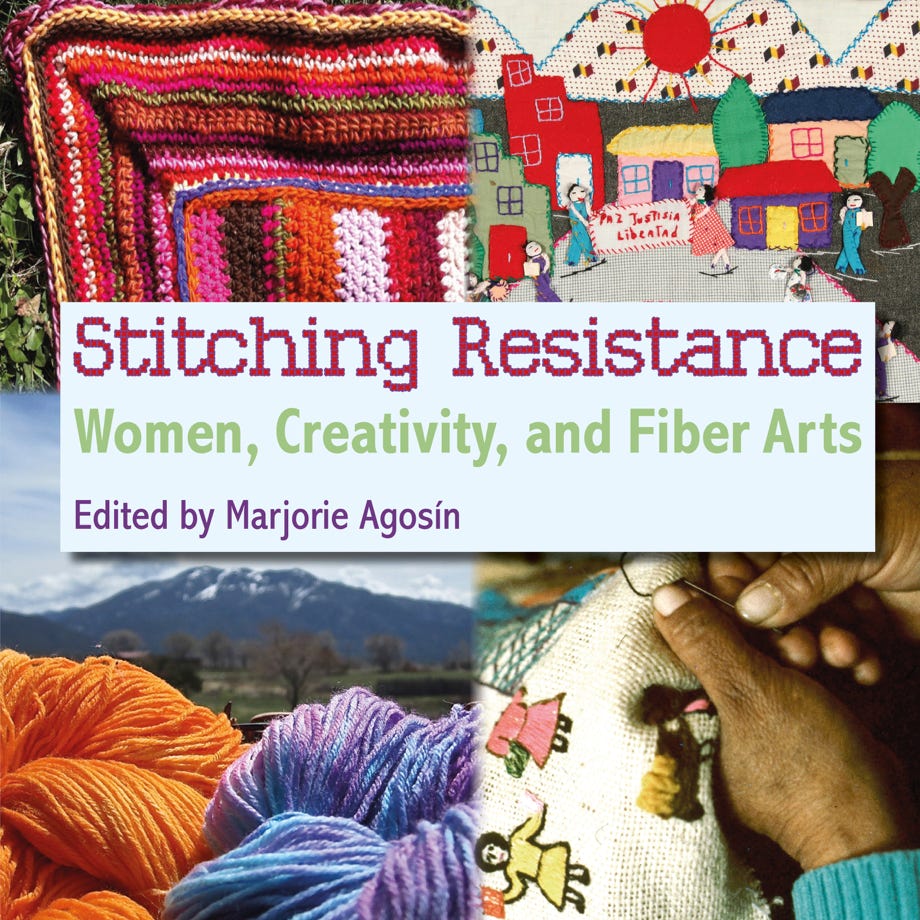

About the editor:
Marjorie Agosín, Professor of Spanish and Latin American Studies at Wellesley College, is a poet, human rights activist, literary critic with an interest in Jewish literature and literature of human rights in the Americas; women writers of Latin America; and migration, identity, and ethnicity.
Also available from Solis Press: Home: An Imagined Landscape.
Chapters written by:
Esther Andradi
Anne Ashbaugh
Roberta Bacic
Gina Canepa
Lori Marie Carlson
Lorraine Lener Ciancio
Roger Dunn
Gaby Franger
Michal Held
Marilyn Kimmelman
Rebecca Leavitt
L. Dunreith Kelly Lowenstein
Ana Luszczynska
E.M. O’Connor
Marcela Orellana Muermann
Linda Rodriguez
Heather D. Russell
Renée S. Scott
Inela Selimović
Emma Sepúlveda Pulvirenti
Sheryl St. Germain
Bernice Steinhardt
Stitching Resistance: Women, creativity, and the fiber arts edited by Marjorie Agosín
The power of fabrics can be amplified well beyond the individual experience. Often, the creation of these pieces begins within the home but they travel out into the world sharing their stories. The individual artists featured in the book and the movements that follow, present an interesting journey from stitching the internal to the external; a journey from the hearth to the collective voice of the world.
The work of weaving, stitching, and embroidering has been important for women around the world, spanning across all disciplines and time. This book includes the chapters from different disciplines including those by poets, philosophers, scholars, social workers, folklorists, and art historians.
People of all trades and disciplines and from around the world have the enormous capacity to convey ideas about stitching. The reader will hopefully find inspiration, delight, and a tremendous sense of awe on reading these diverse essays all united by the commonality of fabric arts and by their power to transform and inspire.
This collection is extraordinary in many ways. The scholars and artists who have contributed to the anthology provide perspectives from diverse disciplines and all of them carry a dialogue and resonate with each other. Readers are invited to enter into the spaces that each of these chapters convey, from the marvels of ancient Greece, with its myths of weaving and unweaving, to the groups around the world who have used stitching to inspire positive change and peace. We can observe how the individual artist moves from the private narratives of self to the public discourse of art as a tool to empower and transform the lives of women and their communities.
There is much to comment on in each of these chapters, all especially written for this book. We are certain that every reader will find meaning as he or she encounters these essays.
In each of these chapters about individual artists or social movements, the intense need to live in beauty and create meaningful works of art is apparent. The need to create forms of beauty allows the artist to transcend horror, improve society, and envision a brighter future. The threads, the scraps of cloth, the wool, the lace, and the stitching are all manifestations of beauty, resistance, courage and the possibility to embroider the world with grace and light.
Paperback, 8.5 inches × 8.5 inches; 216mm × 216mm; 244 pages. Colour photographs throughout.
© Solis Press